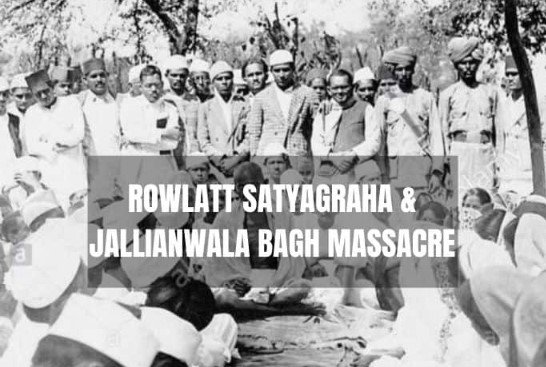The Rowlatt Satyagraha of 1919 holds significant importance in the history of India’s struggle for independence. This movement, led by Mahatma Gandhi, was a direct response to the oppressive Rowlatt Act, which extended emergency wartime measures into peacetime, infringing on civil liberties. Here are the key points highlighting the significance of the Rowlatt Satyagraha:
Background of the Rowlatt Act
- Rowlatt Act Provisions: Officially known as the “Anarchical and Revolutionary Crimes Act of 1919”, it allowed the British government to imprison any person suspected of terrorism without trial for up to two years, and it curbed press freedom.
- Public Outrage: The act was seen as a severe infringement on civil rights, leading to widespread outrage among Indians who had hoped for greater self-governance following World War I.
Emergence of Mass Civil Disobedience
- First Nationwide Protest: The Rowlatt Satyagraha was one of the first instances of a nationwide mass protest movement in India, marking a significant shift from localized struggles to a broader national movement.
- Non-violent Resistance: Mahatma Gandhi called for nonviolent resistance, or Satyagraha, urging people to engage in peaceful protests, strikes, and the refusal to cooperate with the British authorities.
Role in Indian Independence Movement
- Unifying Factor: The movement united Indians across regions, religions, and social classes in a common cause against British oppression, laying the groundwork for future mass movements.
- Rise of New Leaders: It brought new leaders to the forefront of the independence movement, including figures like Sardar Vallabhbhai Patel, Jawaharlal Nehru, and others who would later play pivotal roles in India’s freedom struggle.
Jallianwala Bagh Massacre
- Turning Point: The Rowlatt Satyagraha is closely associated with the Jallianwala Bagh Massacre on April 13, 1919, when British troops under General Dyer fired on a peaceful gathering in Amritsar, killing hundreds. This brutal event shocked the nation and intensified the demand for independence.
- International Condemnation: The massacre drew international condemnation and highlighted the repressive nature of British rule, garnering sympathy for the Indian cause worldwide.
Gandhi’s Leadership
- Gandhi’s Ascendancy: The Rowlatt Satyagraha marked Mahatma Gandhi’s emergence as a prominent leader of the Indian independence movement. His philosophy of non-violent resistance gained widespread acceptance and became a cornerstone of the struggle against British rule.
- Moral High Ground: By advocating nonviolent protest, Gandhi positioned the Indian independence movement on a moral high ground, contrasting sharply with the violence and repression of the British authorities.
Impact on British Policy
- Reassessment of Policies: The widespread unrest and the Jallianwala Bagh Massacre forced the British government to reassess its policies in India. Although immediate concessions were limited, it set the stage for subsequent reforms and increased Indian representation in governance.
- Montagu-Chelmsford Reforms: In response to the agitation, the British implemented the Montagu-Chelmsford Reforms, which introduced limited self-governance in India, although these reforms fell short of Indian aspirations.
Conclusion
The Rowlatt Satyagraha of 1919 was a seminal event in India’s freedom struggle, marking the transition to mass civil disobedience and nonviolent resistance under Gandhi’s leadership. It unified the Indian populace against colonial oppression, highlighted the brutal nature of British rule, and set the stage for future movements leading to India’s independence.


